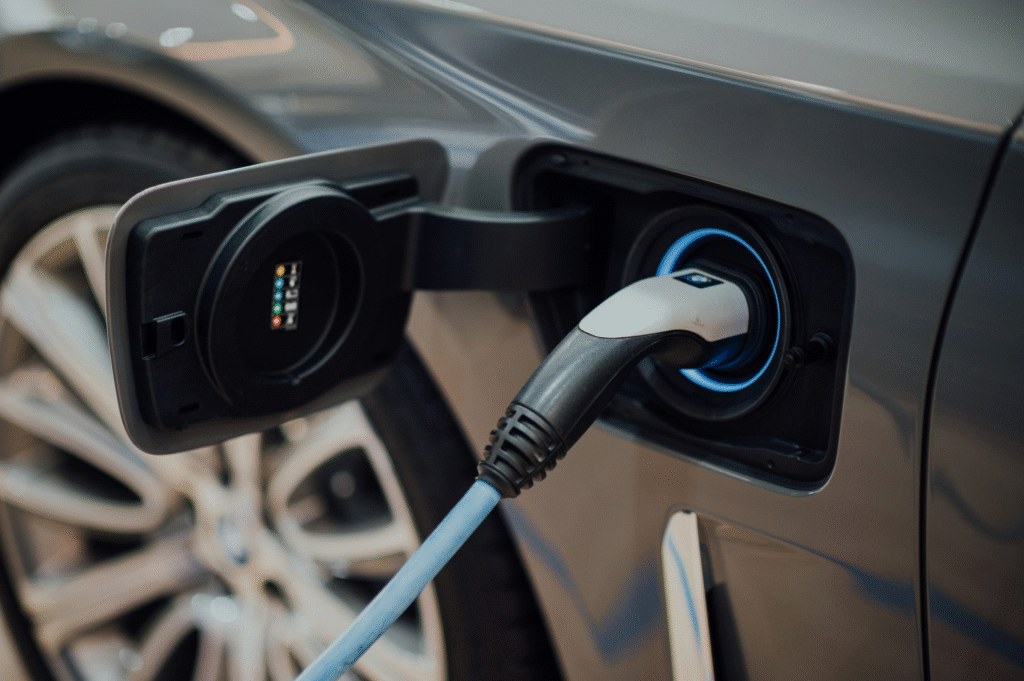“Change is the only constant,” people often say, and this is very true for technology. Right now, one of the biggest races in the world is not happening on sports tracks or in football stadiums, but inside science labs and factories. This race is about who can build the best battery for electric vehicles. Batteries are the heart of electric cars, and without them, these cars cannot move even an inch. As more people start buying electric cars, the demand for better, cheaper, and more powerful batteries has grown faster than ever before.
Startups and big companies around the world are working day and night to find new ways to make batteries. Some are experimenting with materials like sodium and sulfur, while others are trying to design completely new chemistries that can replace the batteries we use today. The goal is simple: to lower costs, make batteries safer, and reduce the dependence on rare minerals that are hard to find and often controlled by only a few countries. This competition is not just about science—it is about who will control the future of the car industry.
At present, China has a very strong hold in this market. The country produces about 85% of all battery cells in the world. Even more surprising is that China handles almost 90% of the processing of raw materials that are used in the two main types of lithium-ion batteries that dominate today’s electric vehicle industry. This gives China a massive advantage, and many other countries feel they need to catch up quickly or risk being left behind.

Despite all the innovation, the basic design of a battery remains the same. A battery usually has three important parts: a cathode, an anode, and an electrolyte. You can think of them as teammates working together to store and release energy whenever the car needs it. Without this teamwork, the vehicle would not run. But while the structure stays the same, the materials used in these three components can make a huge difference in how powerful, affordable, or eco-friendly a battery can be. That is why companies are searching for alternatives that might replace lithium or at least make batteries less dependent on it.
This search has created a sort of “battery Olympics,” where different types of technologies are competing to win the gold medal. Some batteries are known for storing a lot of energy, others for charging very fast, and some for being cheaper to make. The challenge is finding one that can balance all these qualities together. Car makers and scientists understand that whichever technology manages to check all these boxes could become the future standard for the entire industry.
Sodium-ion batteries, for example, are being closely studied. Sodium is much easier to find than lithium, and it is also cheaper. If these batteries can be made at scale, they could cut down costs and reduce the world’s reliance on lithium mining. But right now, sodium batteries usually cannot store as much energy as lithium-ion batteries, which is a big drawback for car makers. Scientists are working on improving this, but it will take time before sodium batteries become common in cars.
Sulfur batteries are another exciting option. Sulfur is abundant and inexpensive, and these batteries could store a lot of energy if designed properly. However, the current problem with sulfur batteries is that they do not last very long. After being used a certain number of times, their performance starts to drop quickly. Again, researchers are experimenting with new designs and materials to overcome this weakness.
Solid-state batteries are often described as the “dream battery.” Instead of using a liquid electrolyte, they use a solid one, which makes them safer and more energy dense. These batteries could allow electric cars to travel much farther on a single charge while also reducing the risk of fires. But the biggest issue is cost. Making solid-state batteries is still very expensive, and producing them on a large scale is very difficult. Automakers like Toyota and BMW are investing heavily in this technology, hoping to make it practical in the near future.
Even though the race is heating up, the truth is that no single technology has yet won. Lithium-ion batteries are still the backbone of the electric vehicle industry, and they are constantly improving too. Engineers have found ways to make them charge faster, last longer, and cost less compared to a few years ago. So while new battery chemistries are developing, lithium-ion continues to dominate the market.
Why does all this matter so much? Because the type of battery used in electric cars decides how affordable and accessible they can be for regular people. If batteries remain expensive, fewer people will be able to buy electric cars, slowing down the shift away from petrol and diesel vehicles. But if scientists succeed in finding a cheaper and more efficient alternative, electric cars could become as common as smartphones.
The story of electric car batteries is also a story about the environment. Mining rare minerals like lithium and cobalt often causes damage to land and communities, and sometimes even involves unfair labor practices. Finding new ways to build batteries that use more common and safer materials can help reduce these problems and make the industry more sustainable.
As one scientist recently explained, “The future of cars will be decided by batteries.” This single sentence sums up the importance of the ongoing research and competition. Countries and companies are investing billions because they know whoever wins this race will not only make huge profits but also lead the global auto market for years to come.
For now, we can say that the race for the perfect battery is still wide open. It is like watching a marathon where different runners are trying their best, and no one has crossed the finish line yet. Will it be sodium, sulfur, solid-state, or an even newer discovery that takes the crown? That is a question the world is waiting to see answered. One thing is sure—every step forward in battery technology brings us closer to cleaner, cheaper, and more powerful cars.


